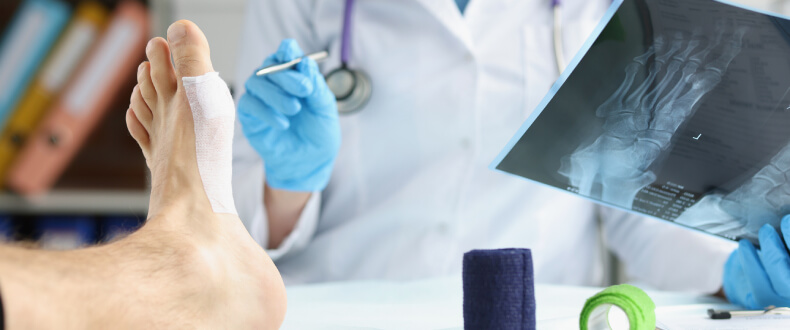Sesamoid pain is a discomfort that affects the small, delicate sesamoid bones embedded in the tendons of the balls of the feet. While this condition can be debilitating, the good news is that effective treatments are available. At Long Island Spine Rehabilitation Medicine, our physiatrists specialize in nonsurgical pain relief and the restoration of function so diagnosing sesamoid pain is right up our alley.
The most common location for sesamoid bones is beneath the joint of the big toe. These bones act like pulleys, providing leverage to the tendons and aiding in joint movement. Sesamoid pain, also known as sesamoiditis, refers to the discomfort and inflammation of these bones and their surrounding tissues.
Causes of Sesamoid Pain
Sesamoid pain can result from a variety of causes, such as:
- Overuse or Repetitive Stress: High-impact activities, such as running or dancing, can lead to sesamoiditis due to the constant pressure on the sesamoid bones.
- Trauma: A direct injury to the sesamoid bones can cause pain due to impact that may even result in fractures.
- Foot structure: Individuals with high arches or prominent first metatarsal heads (of the big toes), tend to be prone to sesamoid pain.
- Improper footwear: Wearing shoes with inadequate cushioning or support can contribute to sesamoiditis.
Symptoms of Sesamoid Pain
While some sesamoiditis results in only minimal discomfort, some patients experience severe foot pain that interferes with daily life. Symptoms of sesamoid pain may include:
- Sharp of dull pain under the big toe joint that worsens with activity
- Swelling and tenderness in the affected area
- Difficulty bearing weight on the affected foot
- Limited range of motion in the big toe
If you are experiencing any of these symptoms, now is the time to contact our doctors for prompt diagnosis and proactive treatment.
Diagnosis of Sesamoid Pain
When you come to LI Spine Rehabilitation Medicine, you can count on receiving a thorough evaluation. We will take a full medical history so we can understand any relevant congenital abnormalities, previous injuries or surgeries, or habitual activities that may have caused this condition. We will then perform a physical examination of your foot to assess inflammation, tenderness, and range of motion. Finally, we use diagnostic imaging (X-rays, CT or MRI scans, ultrasound) to visualize the sesamoid bones and surrounding tissues to pinpoint the area causing the problem.
How Our Physiatrists Treat Sesamoid Pain
Following are recommendations and treatments we prescribe and administer on a regular basis to victims of sesamoid pain. Though some may seem simplistic, the right combination of these treatments can go a long way to making patients more comfortable during their daily routines.
Rest and activity modification: In many cases, reducing or modifying activities that aggravate the pain can be amazingly helpful in alleviating symptoms.
Footwear modification: We may recommend changes in footwear to reduce stress on the affected area.
Orthotic devices: Custom orthotics or shoe inserts can make a big difference by providing better support and cushioning for the foot.
Physical therapy: Our physical therapists will design a personalized rehabilitation program to strengthen the muscles surrounding the affected area, improve joint mobility, and enhance your overall foot function.
Medications: Nonsteroidal anti-inflammatory drugs (NSAIDs) or corticosteroid injections at the site can be very helpful in reducing pain and inflammation.
Padding and taping: Using padding or taping techniques can relieve pressure on the sesamoid bones and improve comfort.
Complementary Therapies: At LI Spine Rehabilitation Medicine, we offer a wide range of complementary therapies that have proven to be effective, including:
- Acupuncture
- PEMF (pulsed electromagnetic field) therapy
- PRP (platelet-rich plasma) therapy
- Ultrasound-guided injections of corticosteroid and a local anesthetic
Contact Us Now To Discuss Our Holistic Approach to Healing
At Long Island Spine Rehabilitation Medicine, our experienced professionals have been successfully treating musculoskeletal pain, including sesamoid pain, for many years. One of the reasons we have an exceptional record of success is that we treat people rather than symptoms, always open to using a combination of traditional and complementary therapies to arrive at the best outcome.
Over our years in practice, we have found that alternating one therapeutic method with another can be extremely beneficial when it comes to accelerating healing. Contact us now how our holistic approach to healing can work for you.
